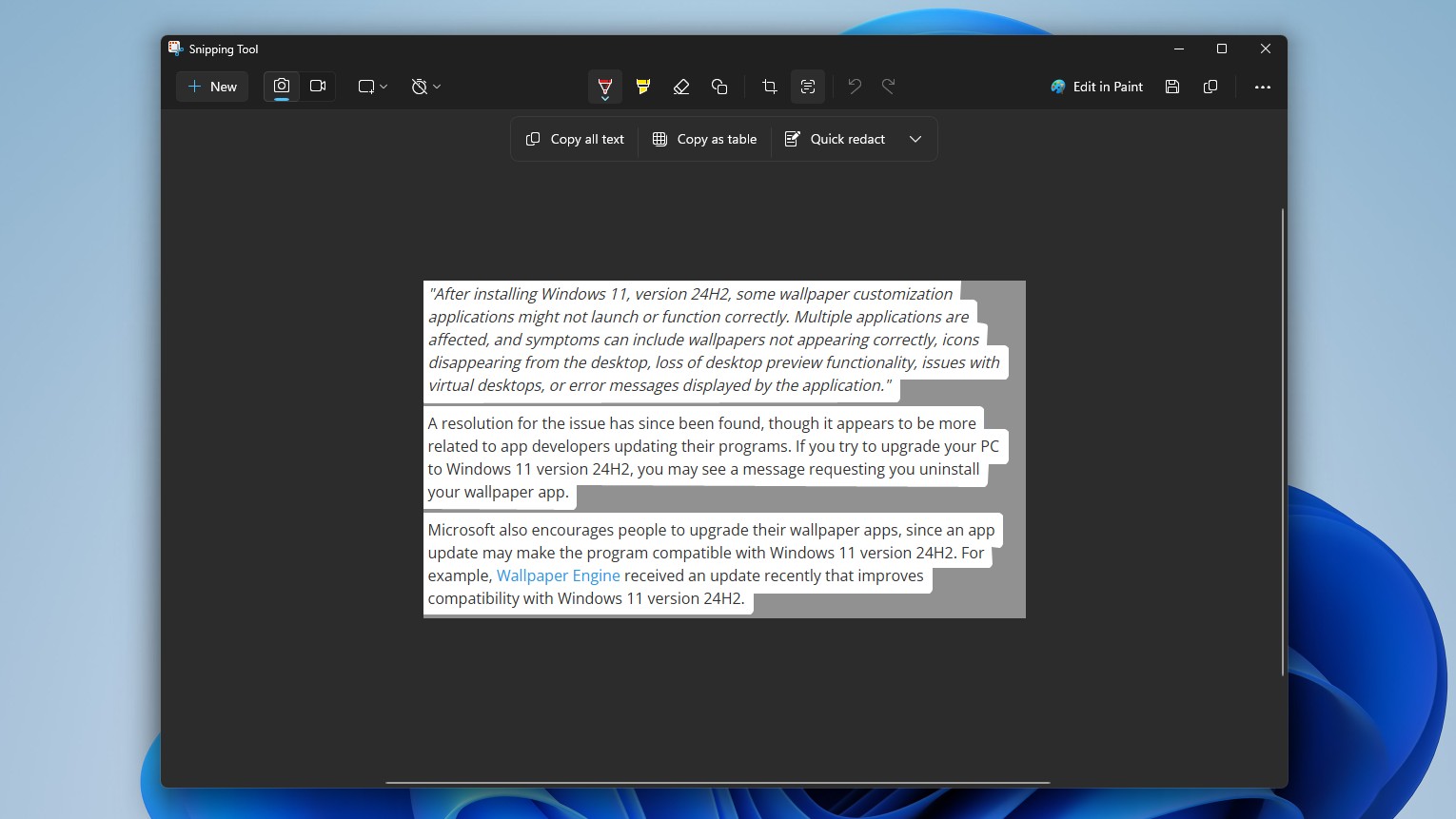For Honor review: This brutal Xbox One multiplayer packs a double-edged sword
Jumping back in time to medieval conflict, For Honor emerges more brutal and confident than ever.
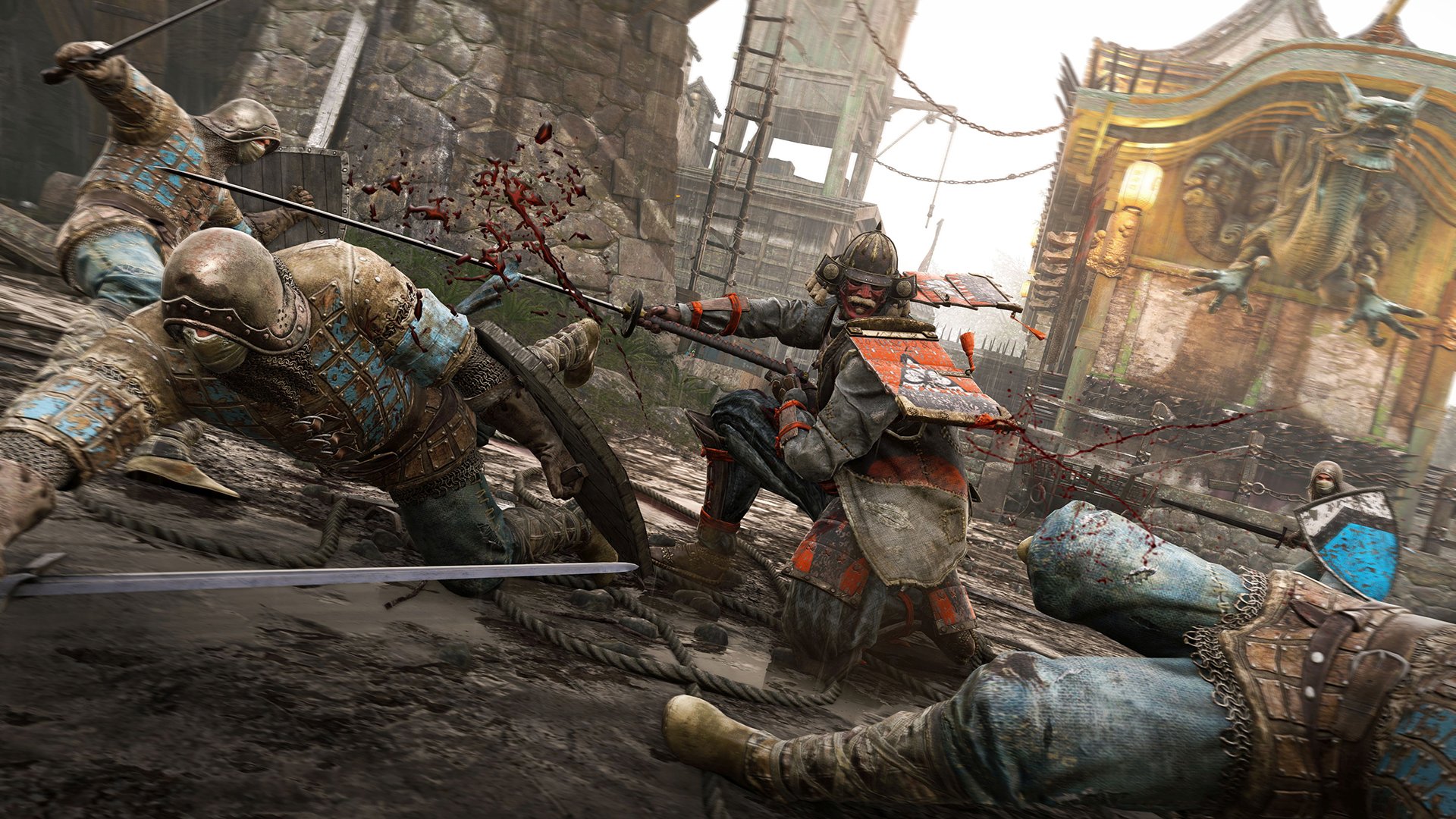
In recent years, Ubisoft gained a reputation for developing franchises around a universal formula. Although the publisher has continued to grow alongside its established franchises during the past decade, the company appeared to follow a certain model across its biggest properties.
However, during this period, we also began to see some of the company's biggest franchises start to lose their identity. Ubisoft began to shift in a new direction when sales eventually began to dwindle, though some refreshing concepts emerged from the publisher as of late. Following the company's recent endeavors into multiplayer-centric titles, with The Division and Rainbow Six Siege, For Honor is a brand new franchise built from the ground up with an online ecosystem in mind. With a class-based, arena multiplayer experience at its core, the game strives to be a unique package among other triple-A titles.
See For Honor on the Xbox Store
For Honor in brief
For Honor is a truly refreshing title to see from Ubisoft, delving into an often-unexplored period filled with brutal conflict. Across the game's single-player campaign and arena multiplayer modes, you get a true sense of the game's unforgiving world.
With unique mechanics like no other and tension in every encounter, players are given full control in the heat of combat. Combined with a diverse roster of heroes, this makes for a truly balanced experience, despite its layered complexities.
However, even with For Honor's heavy focus on multiplayer, frequent networking issues riddle an otherwise polished experience.
Just getting started with For Honor? Check out our beginner's guide.
Get the Windows Central Newsletter
All the latest news, reviews, and guides for Windows and Xbox diehards.
The story behind For Honor
Set in a relatively untouched period in video games, For Honor explores the ruthless era of brutal medieval warfare. After a natural disaster throws the world into chaos, the game delves into an alternate timeline of a widespread war between factions. With three groups fighting for dominance in a society formed around conflict, both For Honor's single-player and multiplayer modes show the relentless nature of the time.
For Honor's single-player campaign is split into three chapters, with one dedicated to each of the three factions: Knights, Vikings, and Samurai. Six missions are available per chapter, which all intertwine to form a cohesive narrative.
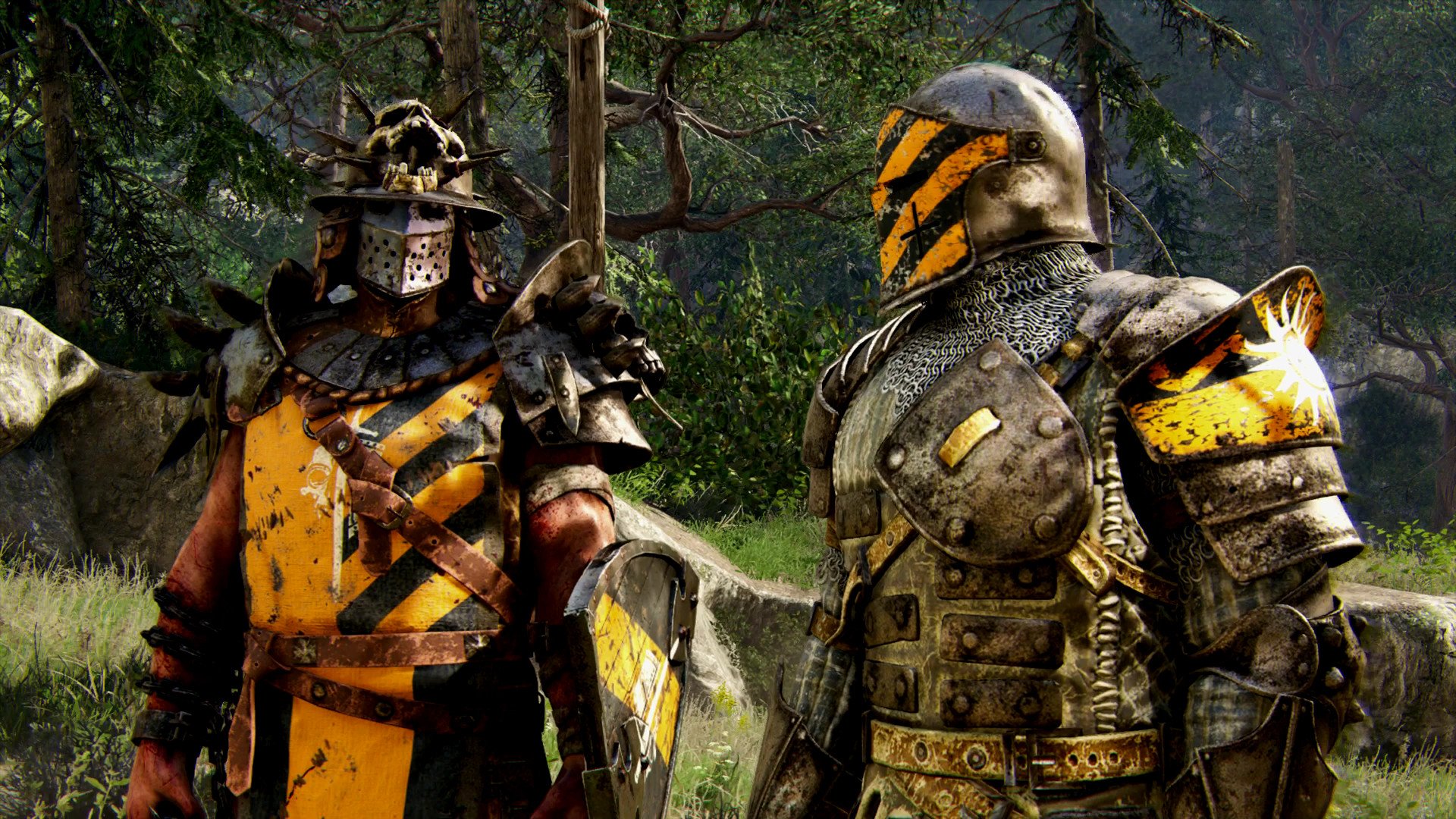
Even with its weak plotline, the single-player still plays a major role in the full For Honor experience.
While For Honor's story is neither truly memorable nor compelling, it establishes a setting for the game's world and adds context to the multiplayer mode. Following stories of the battle, the campaign shows the brutal aspects of the period and adds some character to an otherwise bland roster of heroes. Sadly, it's hard to empathize with even the most established characters in For Honor's cast, and some playable heroes only utter a couple of lines during their time on screen.
Nevertheless, even with its weak plotline, the single-player mode still plays a major role in the full For Honor experience. Serving as a partial tutorial for multiplayer, the campaign introduces the player to For Honor's combat system and each of the game's playable classes. With six chapters devoted to each faction, you get to experience a majority of the heroes on offer, with help from on-screen tips throughout the entire campaign. This makes the single-player mode a valuable tool in learning each of the game's heroes and discovering your ideal play style.
While For Honor's single-player mode fails to stand on its own, it's a sub-section of the full package worth exploring for all new players. Even with a dragging narrative used to string events together, it provides some much-needed context in the surrounding world.
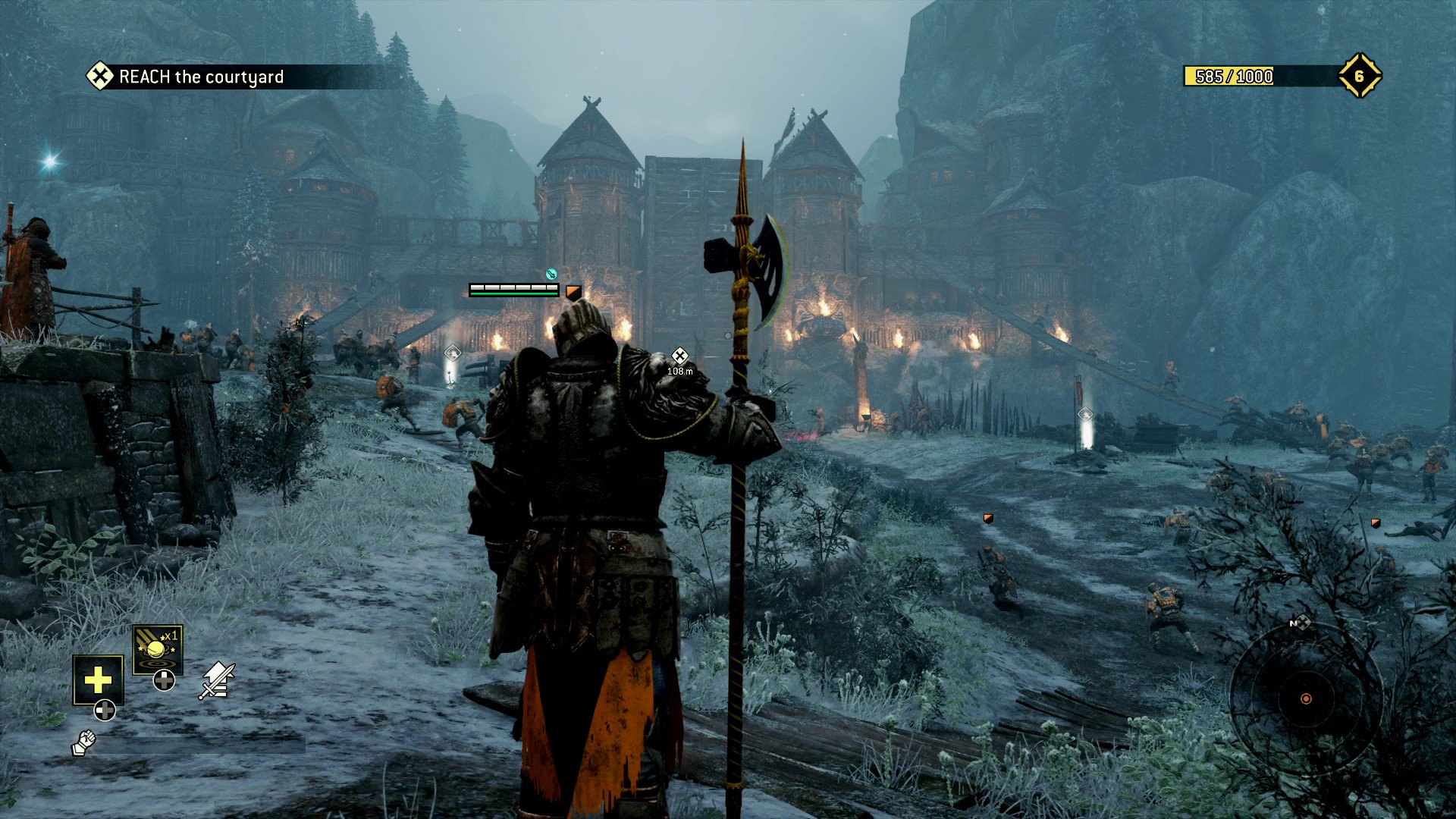
Gameplay
While For Honor's combat is simplistic on the surface, its layered systems begin to unfold with time.
For Honor's core gameplay is centered around "The Art of Battle" – a tailor-made system which encapsulates the mechanics behind the game's swordplay. Bringing skill and precision into every move, skill is a huge deciding factor in the outcome of every encounter.
Every player in For Honor has access to a "guard" – an indicator used to control the angling of your sword during combat. This adds a whole new layer to every instance of combat, with timing and consistency required to emerge successful. When performing a block or parry, players must align their guard with the enemy's indicator. If correctly performed, this will repel the incoming enemy swing. Alternatively, you'll have to move your guard away from your enemy in order to perform any form of attack.
Unlike the swordplay in your average RPG, the guard system makes for unrivaled precision and depth in core combat mechanics. Even with a lack of variety in offensive options, For Honor's swordplay manages to keep every battle tense and engaging.
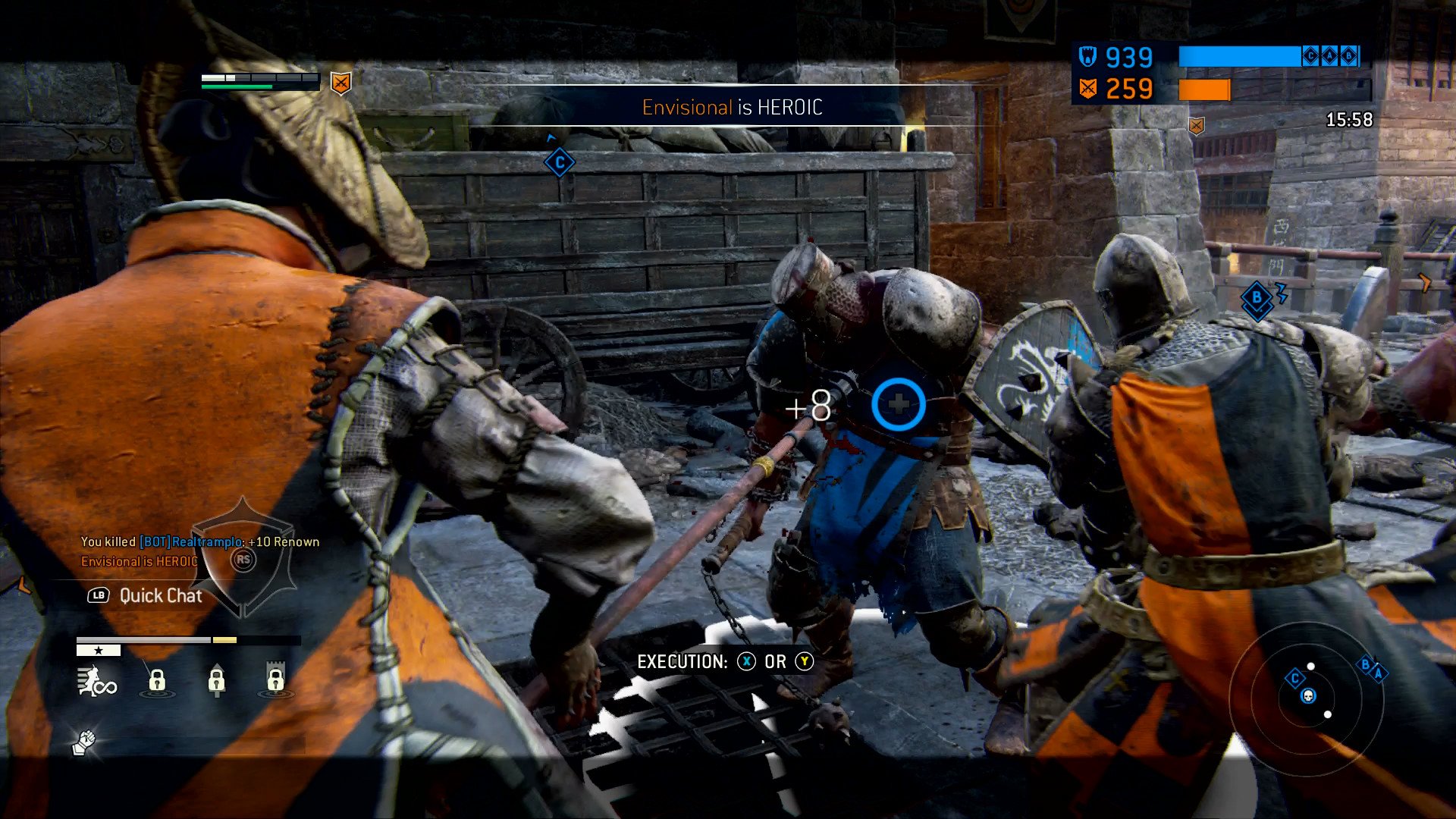
This system also feeds heavily into For Honor's class-based approach to multiplayer, with twelve unique heroes available at launch. It makes for four unique hero types per faction: Vanguards, Assassins, Heavies and Hybrids.
Although not the iconic faces of For Honor, this class-based gameplay has clear influences from increasingly popular hero-centric shooters. With each of For Honor's heroes equipped with their own abilities and movesets, this makes for a range of differing play styles across the entire multiplayer roster. Variations in these classes contribute hugely in keeping For Honor's battles fresh over time, reducing the chance of exhausting its core mechanics.
While For Honor's combat is simplistic on the surface, its layered systems begin to unfold with time. Placing such a reliance on your personal skills as a player, this makes for an accessible system fit for competitive online play. Following the inclusion of heroes, For Honor also manages to add welcome variety and complexities to its basic formula.
Multiplayer
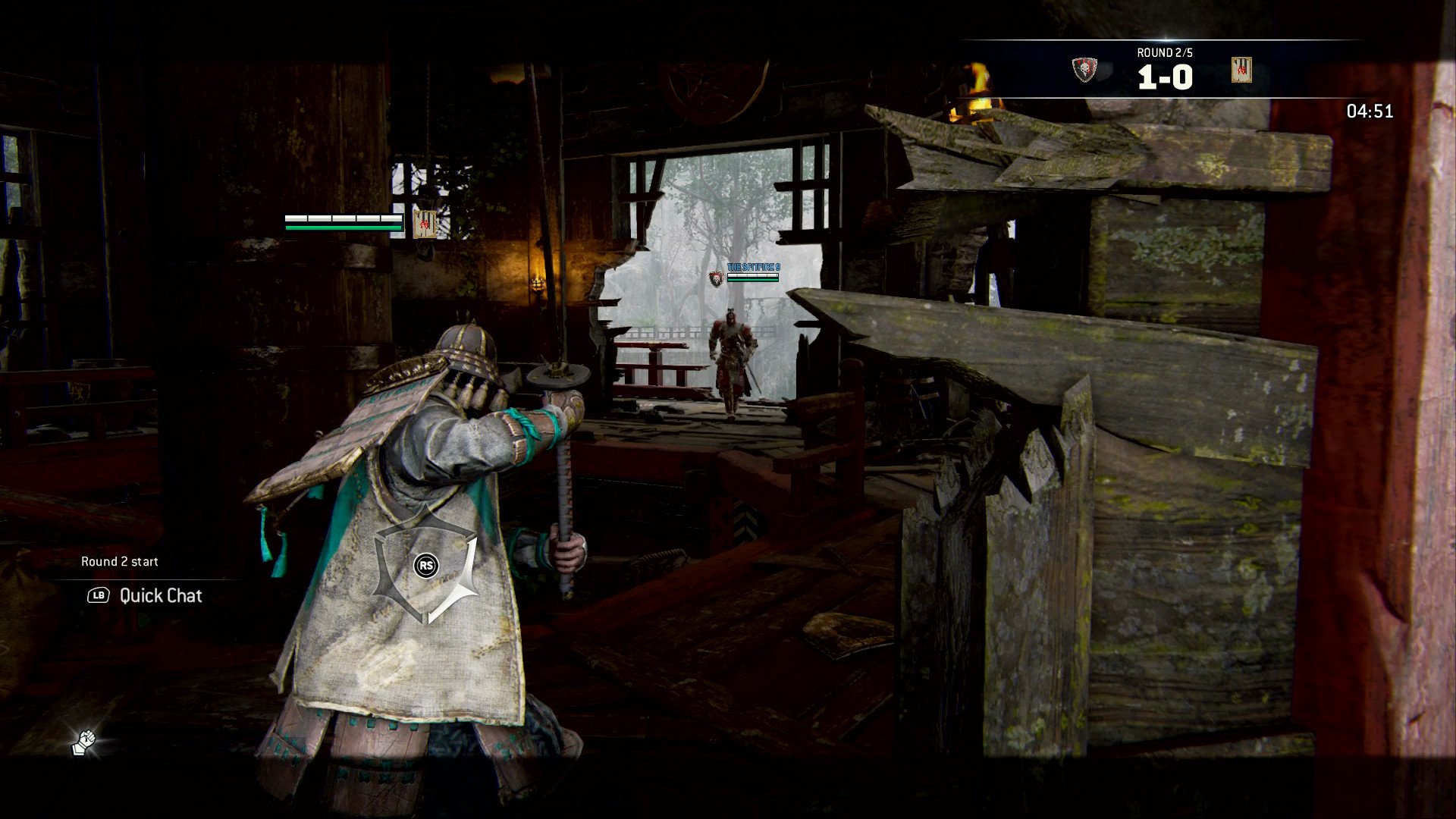
The available modes showcase the diversity of environments possible within For Honor's sandbox
Shipping with five game modes at launch, For Honor's multiplayer portrays varied scenarios of medieval conflict. From chaotic large-scale battlegrounds to tense one-on-one duels, the available modes showcase the diversity of environments possible within For Honor's sandbox.
Duels and Brawls take advantage of the core combat systems of For Honor, with player skill and timing being key components of swordplay. This is the bread and butter of the game's skilled competitive swordfight, leveraging the complexities and precision of its sword fighting systems.
A 4v4 game mode is also available in For Honor from the outset, taking on a more cinematic approach to large-scale gameplay. While these don't have the same competitive flair as the game's smaller modes, they strive to convey the brutal large-scale conflict associated with the medieval period. Still, despite how visually appealing these battles may be, the expansive maps matched with Dominion often possess a lack of substance and dynamism. With the action almost exclusively occurring around a single central capture point, other surrounding areas of the map often feel empty and lifeless. Although gameplay can still remain enjoyable, it's clear that For Honor's fine-tuned melee combat is best suited for close encounters.
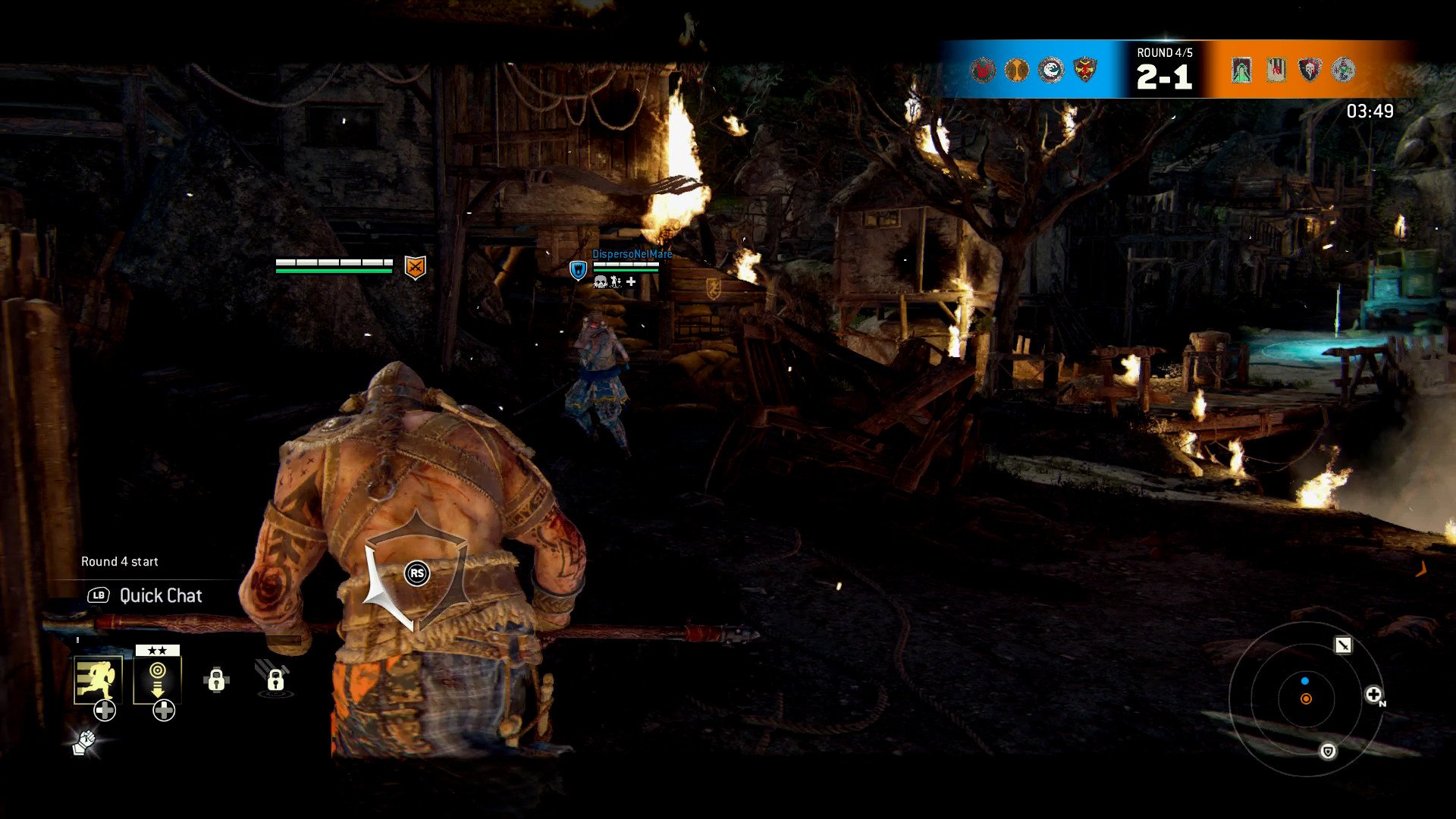
Sadly, despite For Honor's overall strengths in gameplay, numerous technical issues overshadow an otherwise successfully-executed multiplayer experience. Unlike Ubisoft's recent multiplayer-centric titles, which take advantage of dedicated servers, For Honor's peer-to-peer setup hugely restricts its potential as a competitive experience. Frequent connection errors plagued my play sessions, and I often had to stop and wait for instabilities to pass. I was playing on a low-latency gigabit connection, so I'd hate to consider the state of multiplayer on slower internet connections.
Conclusion
The For Honor franchise is off to a great start, offering a truly unique arena multiplayer experience. With outstanding swordplay mechanics and balanced classes, the game offers a premium competitive experience like no other. However, even with great gameplay, For Honor's networking infrastructure and lackluster narrative hold back an otherwise bold action title.
Pros:
- Innovative swordplay.
- Balanced multiplayer classes.
- Brutal and bloody combat feels sharp and responsive.
Cons:
- Frequent networking issues.
- Weak narrative strings together single-player.
See For Honor on the Xbox Store
This review was conducted on Xbox One using a copy of the game provided by its publisher.
Matt Brown was formerly a Windows Central's Senior Editor, Xbox & PC, at Future. Following over seven years of professional consumer technology and gaming coverage, he’s focused on the world of Microsoft's gaming efforts. You can follow him on Twitter @mattjbrown.

